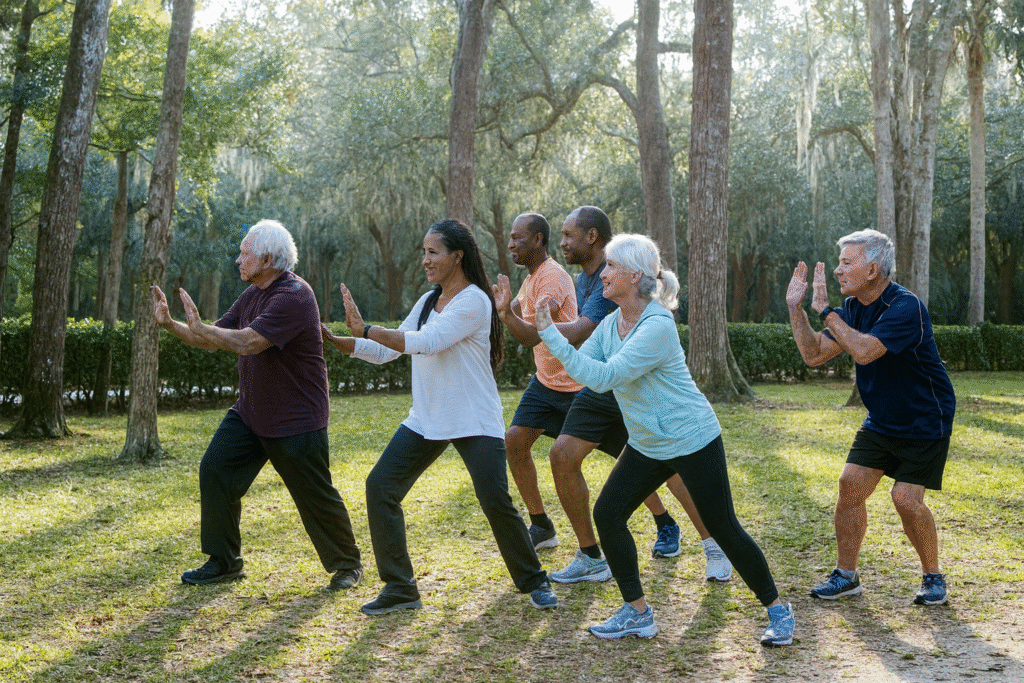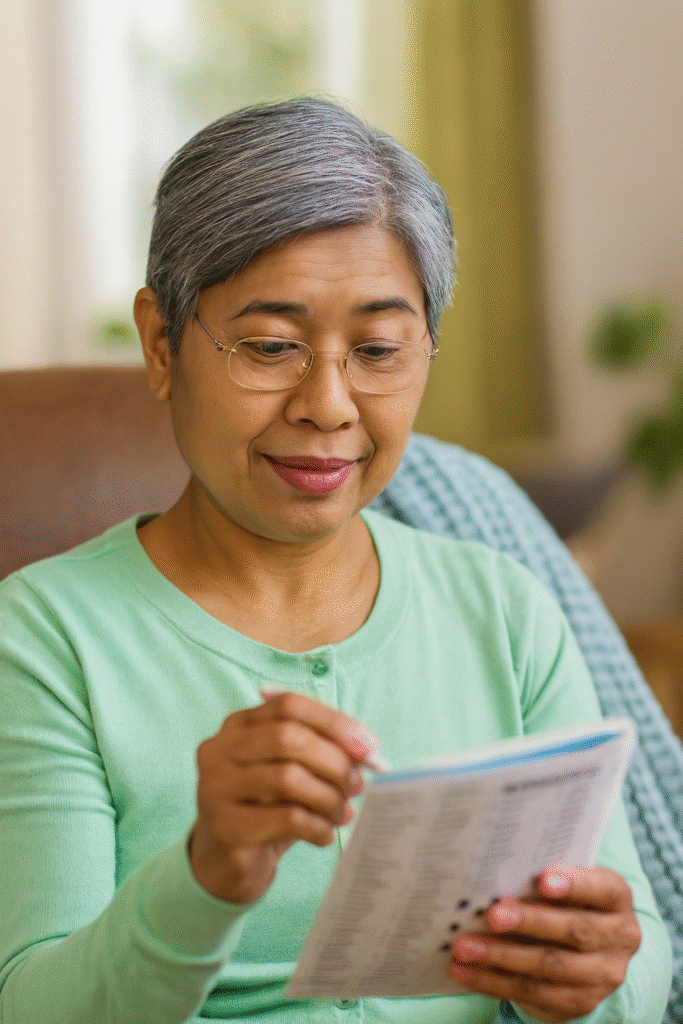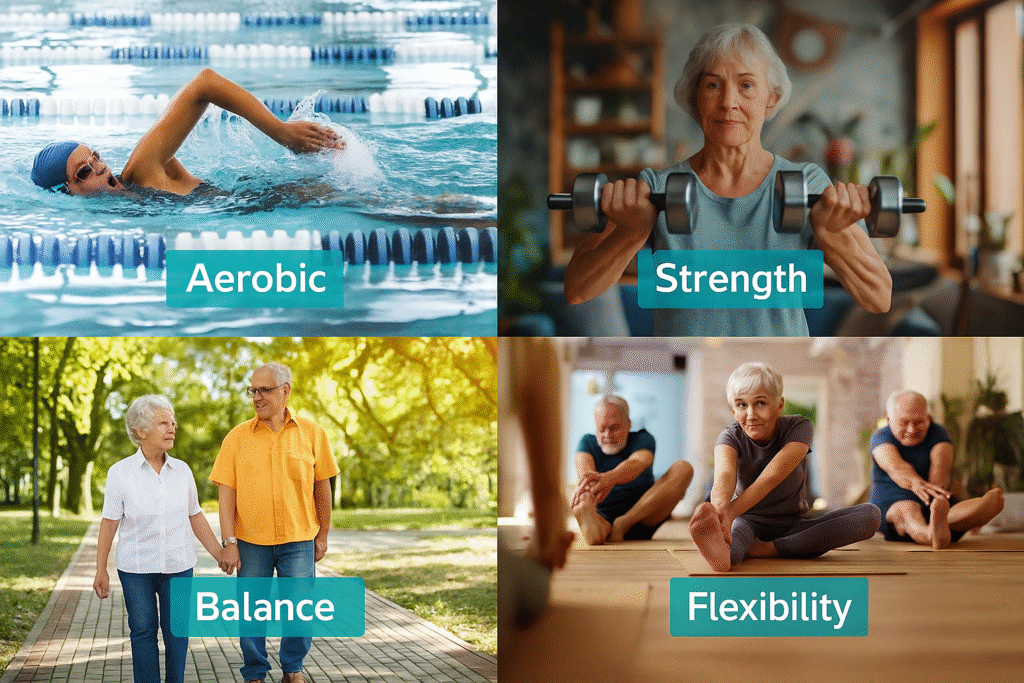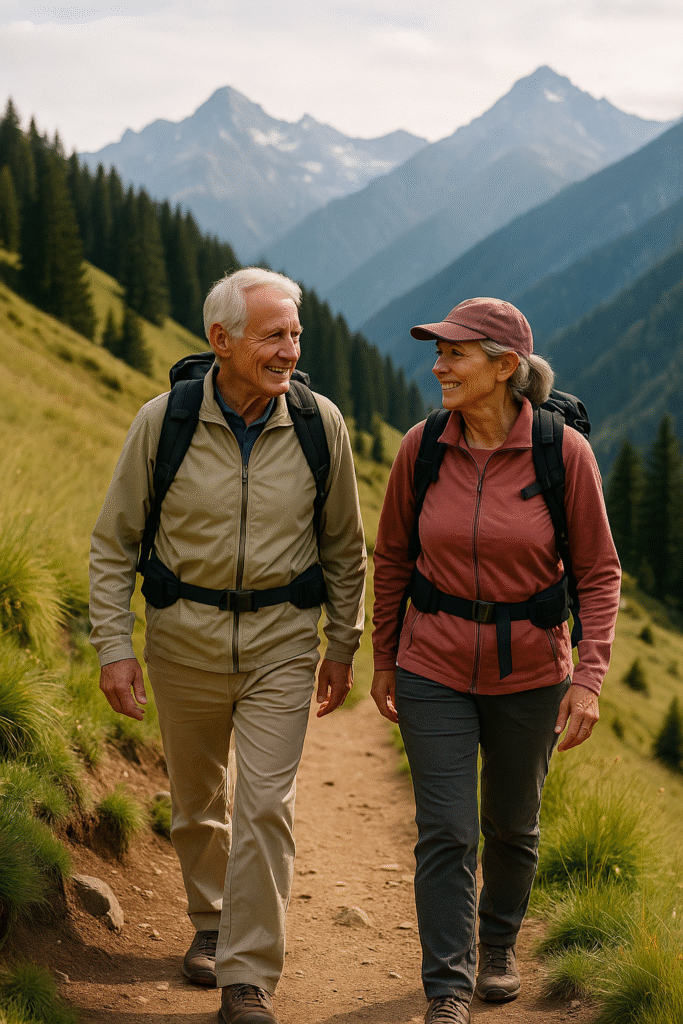Affiliate Disclaimer: This post may contain affiliate links. If you purchase through these links, we may earn a small commission at no extra cost to you.

Staying active isn’t just about fitness — it’s about freedom.
The benefits of exercise for seniors go far beyond building strength. Regular movement protects mobility, reduces falls, improves mood, and helps older adults maintain independence well into later life.
As a practicing wound care physician, I’ve seen firsthand how staying active helps older adults heal faster, maintain mobility, and live independently.
This guide covers 10 evidence-based benefits of exercise for seniors, plus simple tips to get started safely.
1. Preserves Strength and Muscle Mass
Aging naturally leads to muscle loss (sarcopenia), which can make everyday tasks harder. Exercise slows this decline and helps maintain functional strength.
- Builds and maintains lean muscle to support posture, balance, and daily strength
- Makes lifting groceries, climbing stairs, and getting out of chairs easier and safer
- Improves overall stability to reduce fall risk and maintain independence
Pro tip: Even light resistance bands or bodyweight exercises can help prevent muscle loss.
If you use a wheelchair, adding short daily exercise breaks and supportive cushions can make a big difference in posture and comfort — see our guide to the Best Wheelchair Cushions for Seniors.
2. Supports Joint Health and Flexibility
Regular movement helps keep joints lubricated and mobile, reducing stiffness and discomfort.
- Reduces pain and stiffness from arthritis so daily movement feels smoother and less restricted
- Maintains joint range of motion to preserve flexibility for walking, bending, and reaching
- Improves circulation to joint tissues, which supports long-term joint health
Try this: Chair yoga or gentle aquatic therapy for low-impact flexibility.
For those who need extra support during walks, using a walker or rollator can reduce joint strain and build confidence. You can compare top options in our Best Walkers & Rollators for Seniors guide.
3. Improves Balance and Reduces Fall Risk
Falls are one of the leading causes of injury for seniors. Exercise strengthens stabilizing muscles and improves coordination.
- Strengthens core and lower-body muscles that help maintain steady posture and balance
- Improves coordination and reaction time to prevent trips, slips, and missteps
- Reduces fear of falling, which often discourages activity and limits independence
Good choices: Tai chi, heel-to-toe walks, and single-leg stands.
If fall safety is a concern, simple home modifications can help. Explore our article on Fall Prevention & Daily Living Aids for Seniors for practical ideas.
4. Boosts Heart Health
Aerobic activity keeps your heart strong and lowers the risk of cardiovascular disease.
- Lowers blood pressure and heart rate, reducing long-term strain on the heart
- Improves circulation to deliver oxygen and nutrients more efficiently throughout the body
- Reduces risk of heart attack, stroke, and other serious cardiovascular problems
Goal: Aim for 20–30 minutes of walking, cycling, or swimming most days.
(Source: Mayo Clinic – Senior Fitness)
5. Sharpens Cognitive Function

Exercise supports brain health by increasing blood flow and reducing inflammation.
- Improves memory, focus, and mental clarity by boosting oxygen delivery to the brain
- Reduces risk of cognitive decline and age-related memory loss
- Enhances mood and motivation, which encourages continued social and mental engagement
Bonus: Staying active also increases social interaction, which further protects brain health.
(Source: NIH – Benefits of Exercise for Older Adults)
6. Lifts Mood and Reduces Depression
Physical activity releases endorphins, which improve mood and relieve stress.
- Reduces symptoms of depression and anxiety to improve overall mental health
- Increases energy levels and helps regulate healthy sleep cycles
- Boosts self-confidence and a sense of well-being through daily accomplishment
Even short daily walks can elevate mood and energy levels.
7. Maintains Independence
Staying strong and mobile is key to aging at home safely and independently.
- Keeps older adults able to cook, clean, bathe, dress, and shop without assistance
- Delays or avoids the need for in-home caregivers or assisted living facilities
- Preserves dignity, confidence, and the ability to live life on your own terms
Reminder: Independence starts with mobility—use it or lose it.
For seniors who find standing up increasingly difficult, a lift chair can make everyday routines safer and easier. We’ve reviewed the top options in our Best Power Lift Chairs for Seniors guide.
8. Helps Manage Weight and Blood Sugar
Exercise supports a healthy metabolism and helps prevent chronic disease.
- Maintains a healthy weight to reduce joint stress and lower cardiovascular strain
- Improves blood sugar regulation to prevent or manage type 2 diabetes
- Lowers blood pressure and inflammation that can lead to chronic disease
Combine regular movement with a balanced diet for the best results.
9. Strengthens the Immune System
Moderate activity improves your body’s natural defenses.
- Reduces inflammation that can weaken immunity and slow healing
- Improves the body’s response to vaccines and illness
- Helps fight off infections more effectively and recover faster
Pro tip: Consistency matters more than intensity.
10. Slows Overall Aging
Regular movement helps preserve physical function longer and promotes healthy aging.
- Delays age-related decline in strength, mobility, and energy levels
- Improves overall longevity and quality of life as you age
- Keeps seniors feeling younger, stronger, and more capable in daily life
(According to the CDC, physical activity helps older adults maintain function and independence.)
Types of Exercise for Seniors

Not all exercise has the same benefits. Seniors get the best results by combining aerobic, strength, balance, and flexibility training throughout the week. Here’s a quick guide to help you build a balanced routine:
| Type | Examples | Key Benefits for Seniors |
|---|---|---|
| Aerobic | Walking • Swimming • Cycling | Improves heart health • boosts energy • supports weight control |
| Strength | Resistance bands • Light weights • Bodyweight squats | Builds muscle • supports joints • prevents falls |
| Balance | Tai chi • Heel-to-toe walk • Single-leg stands | Improves coordination • reduces fall risk • builds confidence |
| Flexibility | Chair yoga • Gentle stretching • Water aerobics | Increases range of motion • reduces stiffness • supports daily movement |
How to Get Started Safely
If you’re new to exercise, start slowly and build gradually. Safety is key.
- Talk to your doctor before starting a new program
- Begin with low-impact activities and short sessions
- Incorporate strength, balance, and flexibility work each week
- Choose activities you enjoy (walking, gardening, swimming)
- Listen to your body and rest when needed
Final Thoughts

In my work with older adults, I’ve consistently seen how regular movement improves recovery, strength, and quality of life.
The benefits of exercise for seniors are profound — from preventing falls to improving memory, mood, and independence. Staying active as you age is one of the most powerful ways to protect your health, mobility, and quality of life.
Frequently Asked Questions
Q: How much exercise should seniors aim for each week?
A: Most experts recommend at least 150 minutes of moderate aerobic activity plus two strength-training sessions each week, adjusted for your health and mobility level.
Q: What types of exercise are safest for older adults with limited mobility?
A: Chair exercises, water aerobics, resistance band workouts, and short daily walks are gentle, low-impact options that build strength and balance without stressing the joints.
Q: Can exercise really improve memory and brain function for seniors?
A: Yes — regular activity increases blood flow to the brain, which helps protect against cognitive decline and supports better memory, focus, and mental clarity as you age.
Medical Disclaimer: This content is for informational purposes only and is not medical advice. Always consult a healthcare provider before starting any new exercise routine.
